
A callback to the GameCube game gets an unfortunate paywall
The post Retro Games Are Coming To <i>Animal Crossing: New Horizons</i> But You Have To Pay To Play Them appeared first on Kotaku.


A callback to the GameCube game gets an unfortunate paywall
The post Retro Games Are Coming To <i>Animal Crossing: New Horizons</i> But You Have To Pay To Play Them appeared first on Kotaku.

Ahead of COP30, Gates calls for a shift in focus away from near-term emissions goals. Experts say that’s dangerously misguided.
The Rust project announced today the release of Rust 1.91 as the latest update to this popular programming language priding itself on memory safety capabilities…
We may earn a commission from links on this page. Deal pricing and availability subject to change after time of publication.
Target has joined Walmart and Best Buy in unveiling its Black Friday sale plans. Target will be holding multiple sale events leading up to Black Friday across departments, including clothes, toys, electronics, and more. Here’s everything you need to know about the upcoming sales.
Target says it will have week-long deals every Sunday starting Nov. 2 through Dec. 24. It’ll also have “Deal of the Day” sales with items going up to 50% off. Then, there will be an official Early Black Friday Sale followed by an actual Black Friday sale. If you happen to buy something from Nov. 1 through Dec. 24 that drops in price later, Target will match the price for you and refund you the difference.
Here are all the sales Target will have:
Deal of the Day: From Nov. 1 through Dec. 24.
Week-long deals: Every Sunday from Nov. 2 through Dec. 24.
Early Black Friday Sale: A three-day event from Nov. 6 to 8.
Black Friday Sale: Black Friday starts online Thursday, Nov. 27, and in stores Friday, Nov. 28.
Holiday Price Match Guarantee: From Nov. 1 through Dec. 24.
Target will have deals on gifts, holiday decor, toys, clothing, kitchen essentials, and more. Here are some deals Target has already publicized:
40% off pajamas for all.
40% off women and kids’ sweaters, sweatshirts, and sweatpants.
40% off select holiday decor and lights.
40% off select LEGO.
40% off Cat & Jack toddler tees, shorts, and dresses.
40% off Champion.
40% off holiday sheets.
Up to 50% off small appliances and floorcare, including Ninja.
Up to 50% off select toys, including Barbie, FAO Schwarz, and Hot Wheels.
30% off women’s and men’s Levi’s clothing.
You will need to be a Circle member to take part in the sale, but unlike a Prime membership, Target Circle is free. You can sign up for an account on the Target app or Target.com.
You can also pay for a Target Circle 360 membership, which grants you early access to the sale as well as other perks, like same-day delivery. If you’re a government assistance recipient or a student, you can save 50% on the one-year Circle 360 subscription; otherwise, it starts at $10.99 per month. But again, a paid membership isn’t necessary to get all the best deals.
Best Buy’s sales run from Oct. 31 until Dec. 24. It’s an especially good option if you’re a My Best Buy “Plus” or “Total” member.
Walmart is having deals from November 14 to December 1.
Amazon hasn’t announced its sales plans yet, but it should do so soon.
Disney+ is making its first foray into HDR10+ content, but access to this content will be limited at the start. About 1,000 shows from Hulu will be available with this HDR standard, although other programming under the Disney umbrella will add support at an unspecified later date. Samsung, which is a major player behind this standard for high dynamic range video, announced the news. Disney+ will first offer the HDR10+ content on Samsung Crystal UHD TVs and above for models dating back to 2018, as well as select on Samsung Smart Monitors.
HDR10+ builds on the HDR10 tech for image quality. It’s an alternative to Dolby Vision, and both technologies offer viewers a wider range of contrast, brightness and colors on a scene-by-scene basis. (Assuming you have a screen that supports it, of course.)
Netflix announced the addition of HDR10+ support in March, but a handful of platforms have supported the standard for much longer.
This article originally appeared on Engadget at https://www.engadget.com/entertainment/streaming/disney-begins-rolling-out-hdr10-support-190000237.html?src=rss
An anonymous reader shares a report: The International Criminal Court will switch its internal work environment away from Microsoft Office to Open Desk, a European open source alternative, the institution confirmed to Euractiv. The switch comes amid rising concerns about public bodies being reliant on US tech companies to run their services, which have stepped up sharply since the start of US President Donald Trump’s second administration.
For the ICC, such concerns are not abstract: Trump has repeatedly lashed out at the court and slapped sanctions on its chief prosecutor, Karim Khan. Earlier this year, the AP also reported that Microsoft had cancelled Khan’s email account, a claim the company denies. “We value our relationship with the ICC as a customer and are convinced that nothing impedes our ability to continue providing services to the ICC in the future,” a Microsoft spokesperson told Euractiv.
Read more of this story at Slashdot.

Nearly a decade after NASA partnered with Lockheed Martin to build the X-59, the supersonic jet has completed its first flight in California, according to a press release spotted by Gizmodo. The X-59 Quiet SuperSonic Technology (Quesst) aircraft is designed to reach supersonic speeds without the “sonic boom,” and now with this latest test flight complete, NASA and Lockheed plan to conduct future tests to measure the X-59’s “sound signature and conduct community acceptance testing.”
The flight on Tuesday was between US Air Force Plant 42 in Palmdale, California and NASA’s Armstrong Flight Research Center in Edwards, California. “The X-59 performed exactly as planned,” Lockheed Martin says, “verifying initial flying qualities and air data performance on the way to a safe landing at its new home.”
The ultimate goal for the X-59 project is to open up the possibility for commercial supersonic flights in the future. Traveling at supersonic speeds, faster than Mach 1 or around 768 miles per hour, could dramatically shorten trips transporting people and cargo. And if the Quesst design NASA and Lockheed Martin have come up with works, which includes tweaks like placing the jet engine on top of the plane and using an extremely pointy nose, it should also be much quieter. “People below would hear sonic ‘thumps’ rather than booms, if they hear anything at all,” NASA explained in a 2023 blog post.
A ban on supersonic flights over the United States went into effect on April 27, 1973, in response to concerns of property damage and noise pollution. The ban stayed in place for decades until President Donald Trump ordered the Federal Aviation Administration to remove the ban in June 2025 as part of an executive order. Now there’s a new urgency to NASA and Lockheed Martin’s work with the X-59, and an opportunity to apply what they learn to “inform the establishment of new data-driven acceptable noise thresholds related to supersonic commercial flight over land.”
This article originally appeared on Engadget at https://www.engadget.com/transportation/nasas-supersonic-jet-completes-its-first-flight-in-california-183500716.html?src=rss
We may earn a commission from links on this page. Deal pricing and availability subject to change after time of publication.
If you don’t need luxury earbuds and are simply looking for wireless sound with solid performance, the JLab Go Air Pop Bluetooth Earbuds are a great option. Right now, they are on sale for $17.49 (originally $29.38), making them a great option for everyday buds that you can toss in a bag with your other daily essentials. At this price point, you might even want to grab a backup pair in case you misplace them.
While these earbuds don’t have active noise cancellation (ANC), they have moderate noise isolation and minimal sound leakage for the price, blocking out a fair amount of background noise. And while there isn’t a dedicated companion app, these earbuds do have several EQ presets that allow you to customize the sound output. Battery life lasts around nine hours, but the charging case can provide an additional three charges.
Design-wise, this PCMag review notes that they’re small but secure, and an IP44 rating means that they can withstand a sweaty workout and a quick wipedown with a damp washcloth. The outer panels of the earbuds have touch-sensitive controls, but according to the review, they may take multiple taps to register input.
Ultimately, if you need comfortable and budget-friendly wireless earbuds that perform well for workouts and everyday use (and if you don’t mind touch controls that can sometimes be a little finicky), the JLab Go Air Pop Bluetooth Earbuds offer strong value, especially at over 40% off.
By now, I have a well-established routine when I set up a new pair of Meta smart glasses. I connect my Instagram, WhatsApp and Spotify accounts. I complete the slightly convoluted steps in my Bluetooth settings to make sure Meta AI can announce incoming phone calls and text messages. I tweak the video settings to the highest quality available, and change the voice of Meta AI to “English (UK)” so it can talk to me in the voice of Judi Dench.
But with the $499 Oakley Meta Vanguard glasses, there’s also a new step: deciding what the customizable “action button” should do. The action button isn’t even my favorite part of using the glasses, but it’s a sign of just how different these shades are from the rest of Meta’s lineup.
While the second-gen Ray-Ban and Oakley HSTN glasses iterated on the same formula Meta has used for the last few years, the Vanguard glasses are refreshingly different. They aren’t really meant to be everyday sunglasses (unless you’re really committed to your athletic pursuits) but they are in many ways more capable than Meta’s other smart glasses. The speakers are louder, the camera has new abilities and they integrate directly with Strava and Garmin. And while these won’t replace my go-to sunglasses, there’s more than enough to make them part of my fitness routine.
The sunglasses were very clearly made with athletes in mind. The Oakley Meta Vanguard glasses are the type of shades a lot of people probably think of when they hear “Oakley sunglasses.” The wraparound frames with colorful, reflective lenses are the style of glasses you might associate with a high school track coach, or your neighbor who is really serious about cycling.
The pair I tested had black frames and Oakley’s orange “Prizm 24K” lenses, which aren’t polarized but are favored by a lot of athletes for their ability to dial up the contrast of your surroundings. I was able to comfortably wear my pair in bright, sunny conditions and also in more overcast lower light. I also appreciate that the lenses are swappable, so you can switch them out for a dedicated low-light or different-colored lens depending on your conditions. (Extra lenses cost $85 each and will be available to purchase separately soon, according to Meta.) These glasses don’t, however, support prescription lenses of any kind.

I realize this style of sunglasses won’t be appealing to everyone, but the frame shape does enable a slightly different setup than what we’ve seen with any of Meta’s other smart glasses. Most noticeably, the camera is in the center of the glasses, just above the nosebridge. The LED that lights up when the camera is on is also in the center, near the top of the frames.
As with Meta’s other smart glasses, you can control volume and music playback via a touchpad on the right side of the glasses, but the capture button to take photos and videos is now on the underside of the glasses rather than on top. This is meant to make it a bit easier to reach if you’re wearing a hat or helmet, though I found it took me a few tries to get used to the new placement. Behind the capture button is the previously mentioned “action button,” which can be customized to trigger specific functions via the Meta AI app.
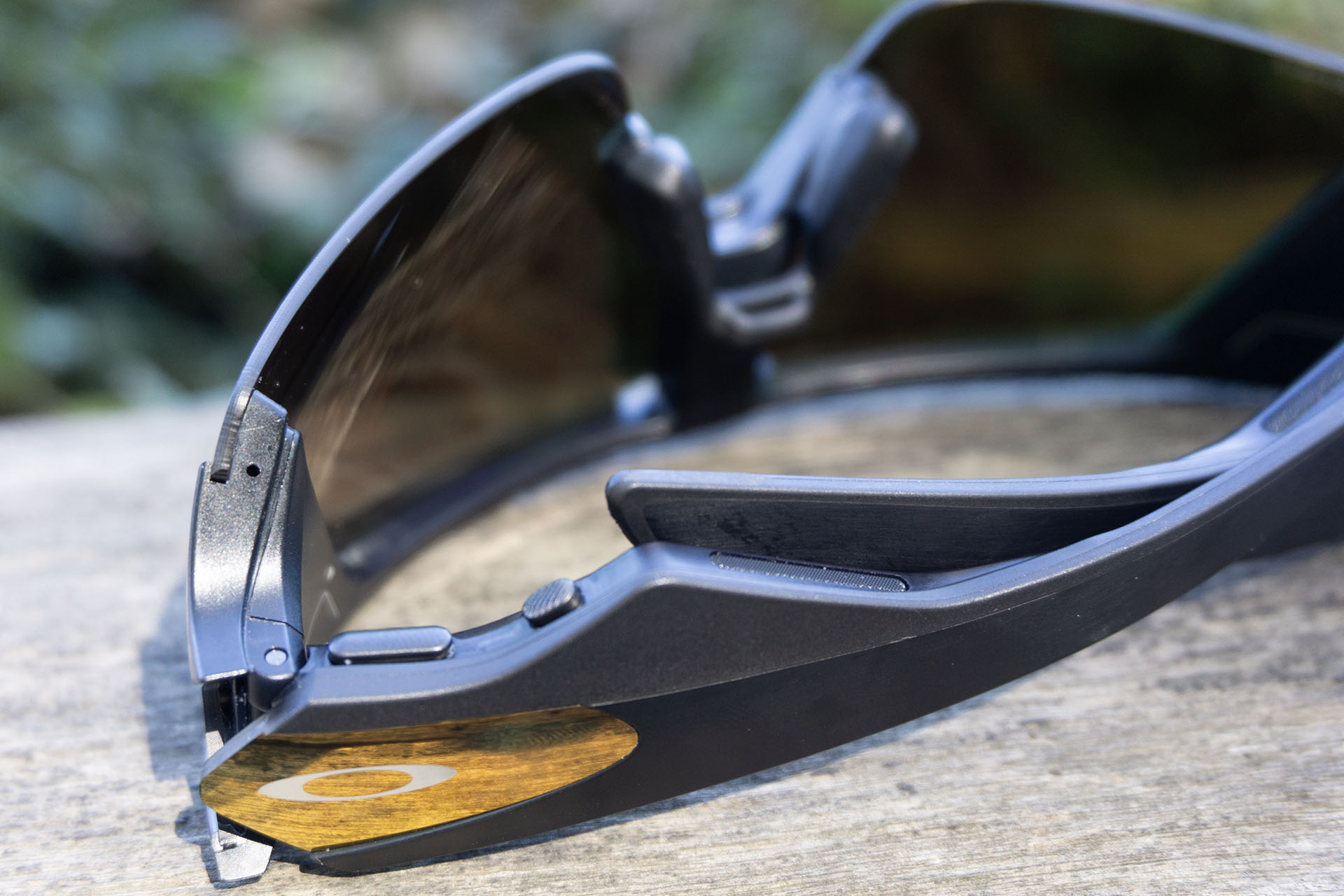
I haven’t yet figured out what the best use for the action button is, though I’ve tried out a few different setups. On one hike, I set it up to automatically call my husband, kind of like a speed dial. During a bike ride, I had it set to record a hyperlapse video. I’ve also tried it out as a shortcut for launching a specific Spotify playlist or as a general trigger for Meta AI. With all of these, I appreciated that the action button allowed me to do something without saying the “Hey Meta,” command. Repeating “hey Meta” to my glasses in public has always felt a bit cringey, so it was nice to have a much more subtle cue available.
The Vanguard’s athlete-focused features go beyond the sportier frames. The shades come with new integrations for two of the most popular run and bike-tracking platforms: Garmin and Strava. If you have a supported Garmin watch or bike computer, you can set up the glasses to automatically capture video clips based on metrics from your activity, like hitting a particular heart rate zone or other milestone. You can also ask Meta AI directly to tell you about stats from your Garmin watch, like “hey Meta, what’s my pace.”
I don’t have a Garmin watch, though I did briefly test out some of these features during my hands-on at Meta Connect. I suspect a lot of runners and cyclists may still find it easier to simply glance at their watch to see stats, but having it all available via voice commands doesn’t seem like a bad thing either.
Strava’s integration isn’t quite as deep. If you’re tracking a run, hike or ride while wearing the glasses, you can overlay your stats directly onto photos and videos from your activity. This includes metrics like distance and elevation, as well as heart rate if you’re also wearing an Apple Watch or other tracker that’s connected to the Strava app. Here’s what it looks like with a photo from a recent bike ride.
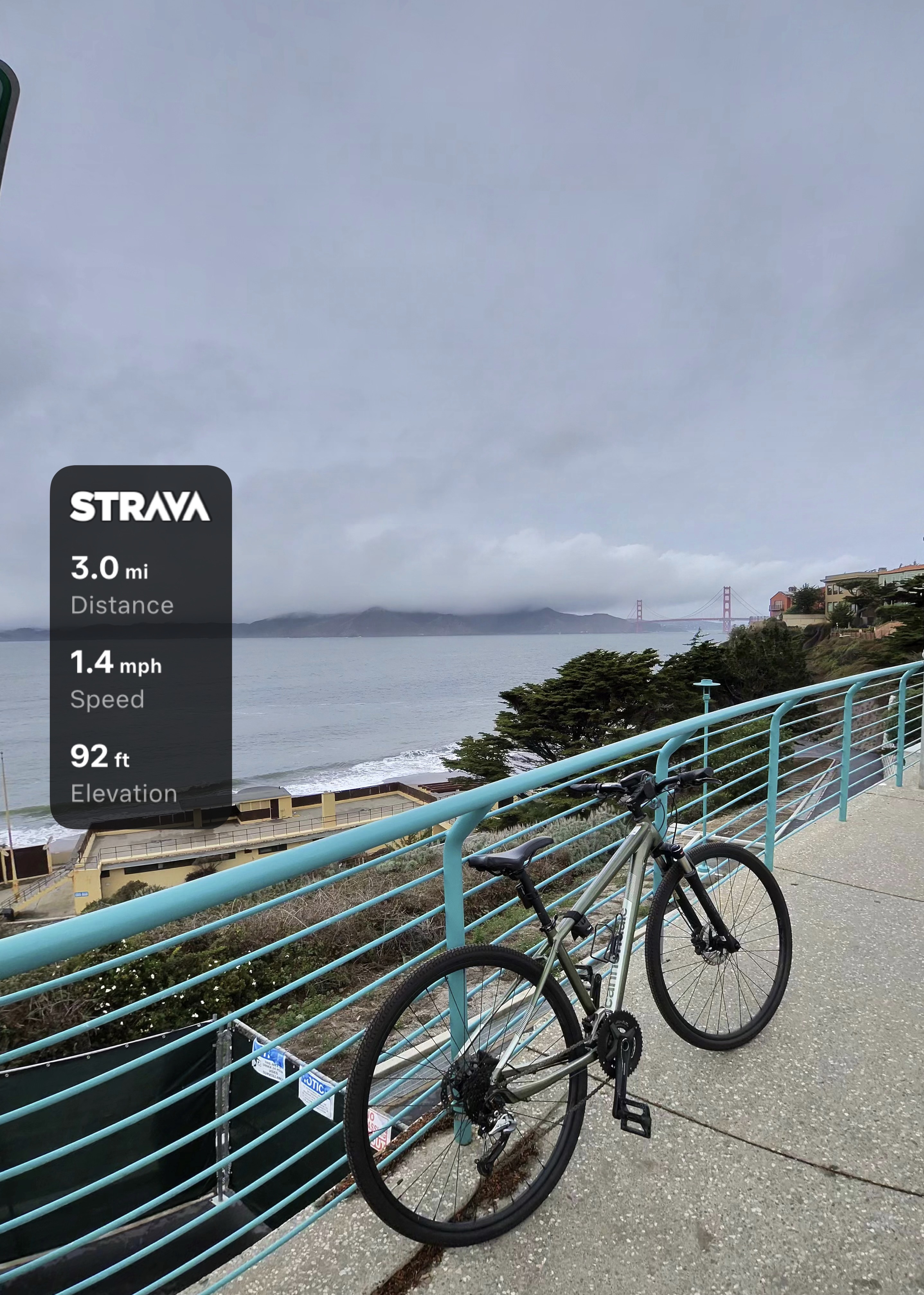
I typically don’t share stats from runs or bike rides (usually because they aren’t that impressive) but it’s a bit more appealing that just sharing a straight Strava screenshot. Another neat feature is that if you share a video, you can watch the stats change in real time alongside your recording. That level of detail isn’t particularly interesting for a mostly flat bike ride on a city street, but I can see how it would be a lot more compelling on a more technical trail ride or in a race.
My only complaint, really, is that Meta has limited these kinds of features to Garmin and Strava’s platforms so far. I’d love to have support for my favorite ski-tracking app, Slopes, and I’m sure there are plenty of people who’d be happy to have an integration with their running or workout-tracking app of choice. Meta has announced some plans to bring more third-party apps onto its smart glasses platform so there might be hope here.
There are other improvements, though, that will be appealing to even casual athletes. The speakers are a lot louder to account for potentially noisy conditions like a congested roadway or high-wind environment. I never had to crank the volume up anywhere near the max during my bike rides or runs, but I can say the speakers were loud and clear enough that I was able to comfortably listen to a podcast with the glasses laying next to me on the couch at full volume.
The new centered camera placement is meant to make it harder for a hat or helmet to interfere with your shots, which has been a consistent issue for me with Meta’s other smart glasses. The new position didn’t totally solve this — I still found that my bike helmet made it into the top of my pics — but at least it’s easier to crop out now that my headgear is centered over the top of my image rather than awkwardly sticking out on one side.
The 12MP ultra-wide camera also comes with new video stabilization settings that make it feel a bit more like a replacement for an action cam. The glasses are set to automatically select a level of stabilization based on your motion, but you can also manually choose between low, medium or high stabilization (stabilization is locked at “medium” if you opt to record in 3K). I’ve mostly left it with the default settings and have been impressed with the results.
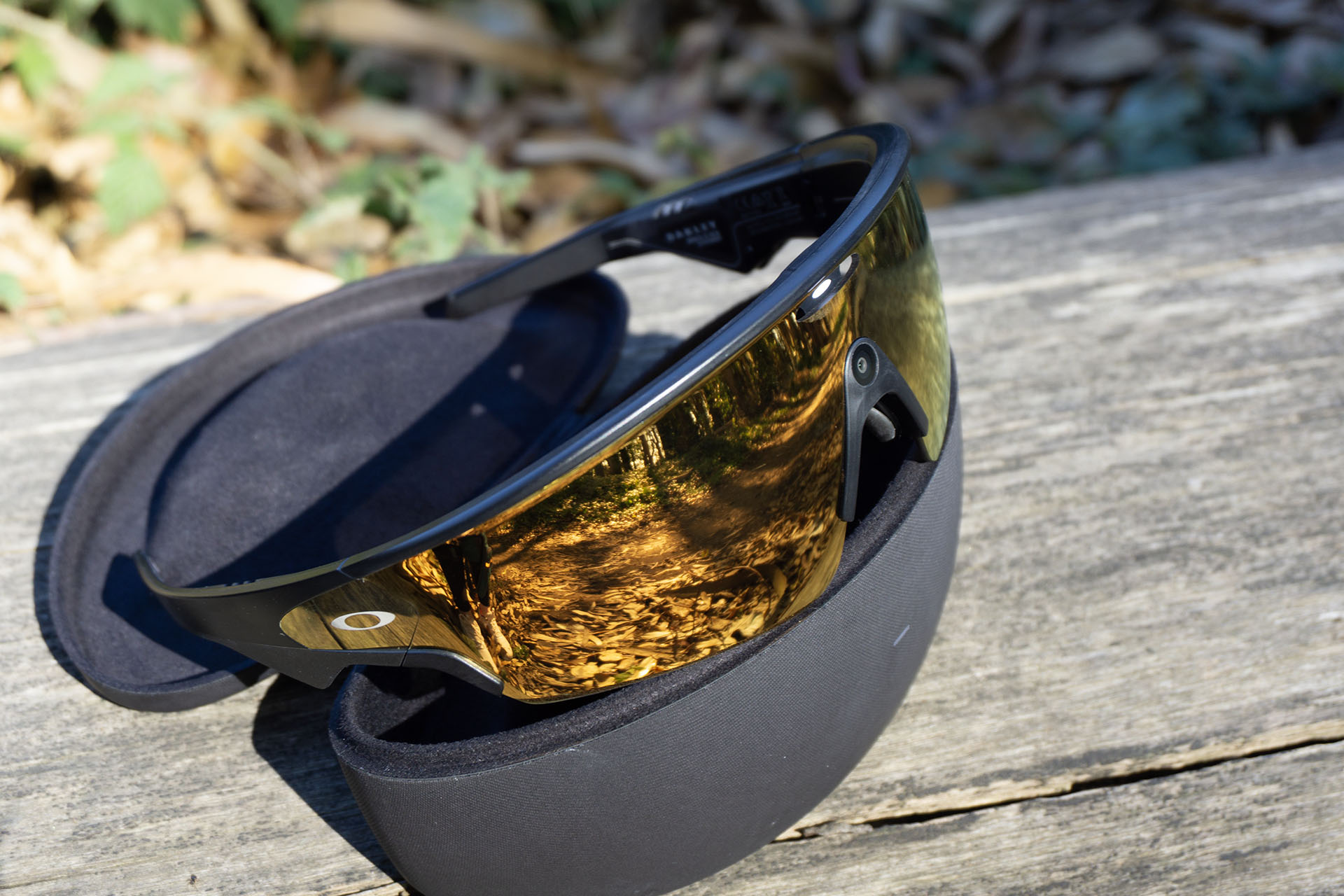
The Vanguard glasses are also Meta’s first smart glasses that can record hyperlapse and slow-motion video. Hyperlapse should be familiar to Instagram users who used the now-defunct app of the same name to record timelapse clips. Now, you can say “Hey Meta, start a hyperlapse” and the glasses will record a similar sped-up clip. My hyperlapse clips ended up looking a bit jittery, though, compared to the timelapse shots I’m used to getting with my GoPro. And unfortunately, there’s no way to adjust the cadence of the video like you used to be able to with the dedicated app.
My slow-motion clips, on the other hand, came out better. It’s not something I’d expect to use very often during a bike ride or trail run, but the POV angle is great for recording clips of pets or kids. Meta is also planning to bring support for hyperlapse and slow-motion videos to the rest of its glasses lineup, though, so you don’t need to get these particular shades to take advantage of the feature.
The other major improvement is battery life. The Vanguard glasses have a notably better battery life compared with the second-gen Ray-Ban glasses or the HSTN frames (probably because the bigger frames allow for a larger battery). According to Meta, the Vanguard glasses can go nine hours on a charge with “typical use” or six hours with continuous audio playback. I was actually able to get a little over six hours of audio on a single charge, so they should hold up pretty well if you’re running marathons or competing in longer races. As usual, exact battery life can vary a lot depending on how much you’re using more resource-intensive features like video recording or Meta AI.
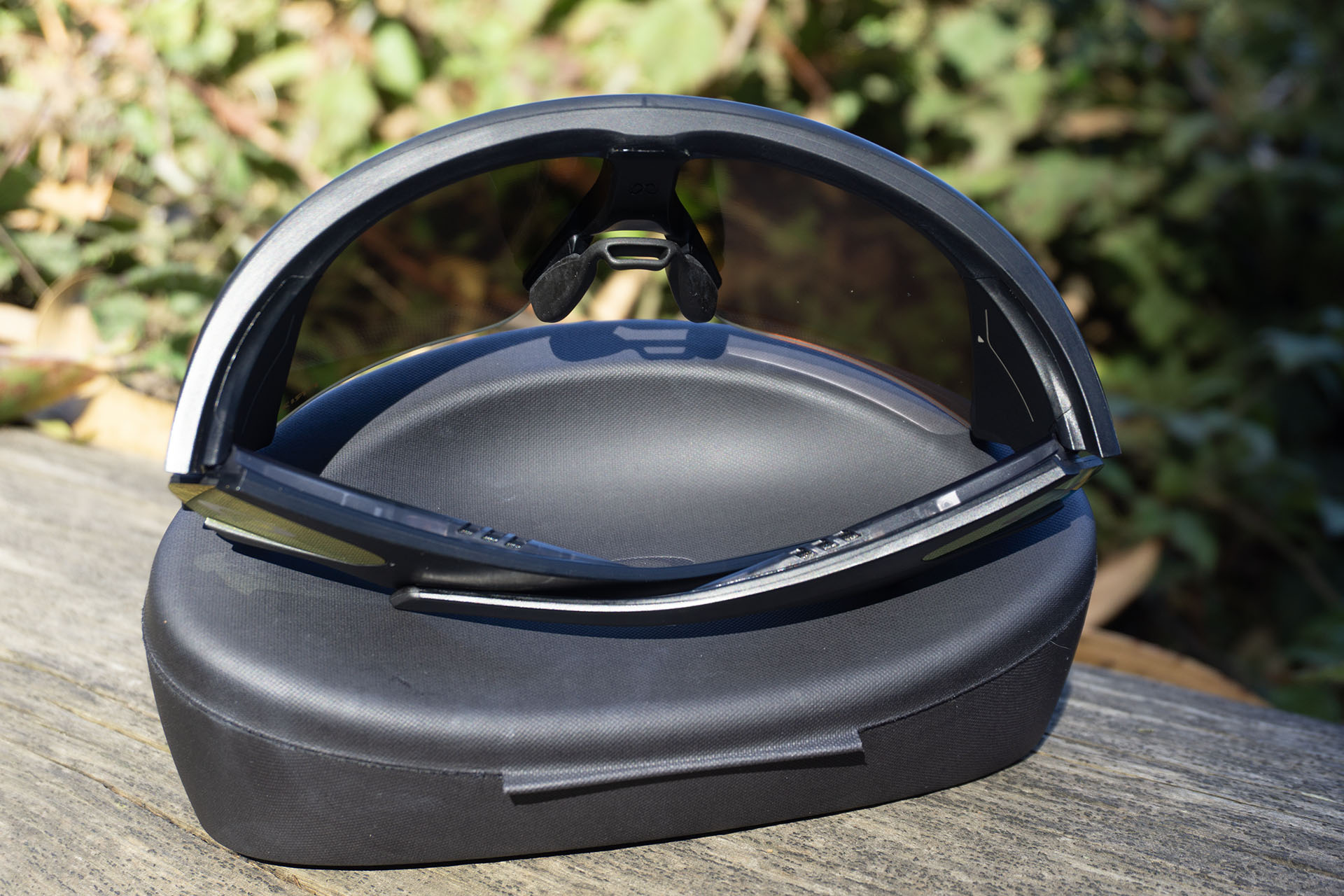
I’m especially looking forward to seeing how these glasses will hold up during a day of snowboarding. Meta previously told me that the battery has been optimized for a wider spectrum of temperatures so hopefully the battery won’t drain as quickly on the mountain as Meta’s other glasses. And with increased water resistance — the shades have an IP67 rating — I wouldn’t worry about dropping them in the snow.
While Meta and EssilorLuxottica have gotten very good at making smart glasses (sorry Mark Zuckerberg, I won’t call them “AI glasses,”) they are still somewhat of a niche product. And the ultra-sporty Oakley Vanguard glasses are even more niche. At $499, these are also more expensive than other models.
That, understandably, may feel too steep for a pair of sunglasses you’re likely only going to wear during specific activities. But if you’re a dedicated cyclist, runner, hiker or [insert outdoor activity of your choice], there’s a lot to like. The camera makes a lot more sense for action cam-like POV footage, and better video stabilization means you’re more likely to get shots you actually want to share. Ready-made Garmin and Strava integrations are practically begging for you to brag about your latest PR or race time, which will certainly appeal to many.
This article originally appeared on Engadget at https://www.engadget.com/wearables/oakley-meta-vanguard-review-sporty-to-a-fault-183000829.html?src=rss
On Tuesday, OpenAI CEO Sam Altman told Reuters during a livestream that going public “is the most likely path for us, given the capital needs that we’ll have.” Now sources familiar with the matter say the ChatGPT maker is preparing for an initial public offering that could value the company at up to $1 trillion, with filings possible as early as the second half of 2026. However, news of the potential IPO comes as the company faces mounting losses that may have reached as much as $11.5 billion in the most recent quarter, according to one estimate.
Going public could give OpenAI more efficient access to capital and enable larger acquisitions using public stock, helping finance Altman’s plans to spend trillions of dollars on AI infrastructure, according to people familiar with the company’s thinking who spoke with Reuters. Chief Financial Officer Sarah Friar has reportedly told some associates the company targets a 2027 IPO listing, while some financial advisors predict 2026 could be possible.
Three people with knowledge of the plans told Reuters that OpenAI has discussed raising $60 billion at the low end in preliminary talks. That figure refers to how much money the company would raise by selling shares to investors, not the total worth of the company. If OpenAI sold that amount of stock while keeping most shares private, the entire company could be valued at $1 trillion or more. The final figures and timing will likely change based on business growth and market conditions.
Much like Half-Life: Alyx, Thief’s long-awaited return is a VR exclusive. The game was announced in June, but now we know when it will arrive. You can play the pioneering stealth franchise’s new chapter, Thief VR: Legacy of Shadow, on December 4.
Thief VR takes place about halfway between the events of the original trilogy and Thief (2014). You play as Magpie, a cunning thief (duh), who discovers a legendary eye artifact with a mysterious connection to the past. You’re operating in a city that’s under the grip of Baron Ulysses Northcrest, “a tyrant who crushes rebellion before it can take root.” That all sounds like an ideal backdrop for sneaking around and stealing shit.
Publisher Vertigo Games offered a glimpse at Meta Quest gameplay, which you can watch below. Thief VR will also be available on PS VR and SteamVR when it arrives on December 4. The title has a $30 list price on Steam and Meta, but can be pre-ordered now for $27. The PlayStation Store version doesn’t yet have pricing or reservation info.
This article originally appeared on Engadget at https://www.engadget.com/gaming/thiefs-vr-revival-arrives-in-december-181506849.html?src=rss


Perter Berg is teaming up with Yellowstone creator Taylor Sheridan to make Paramount’s live-action adaption of the hit FPS series
The post <i>Friday Night Lights</i> Creator Is Making The <i>Call Of Duty</i> Movie appeared first on Kotaku.
We may earn a commission from links on this page.
If you’re looking for your next pair of running shoes, why not look for guidance from the runners logging more miles than the rest of us? After all, finding the perfect running shoes is about much more than style or brand preference—the right shoes are essential for performance, comfort, and injury prevention.
But with countless options available for both men and women, choosing the perfect pair can feel overwhelming. That’s where data from Strava comes in: Thanks to thousands of runners logging their gear into the app, we know what some of the most popular shoes that real runners trust to carry them all 26.2 miles.
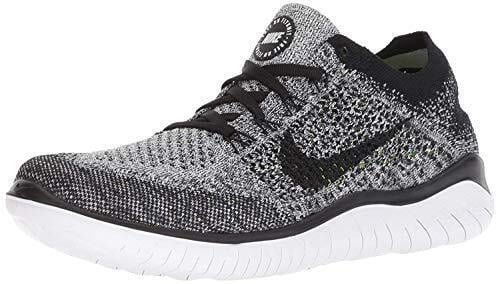
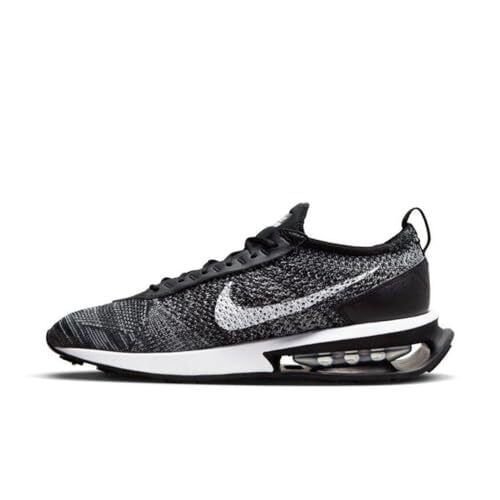
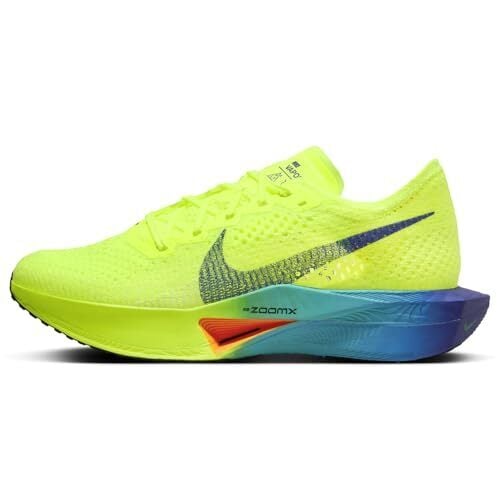
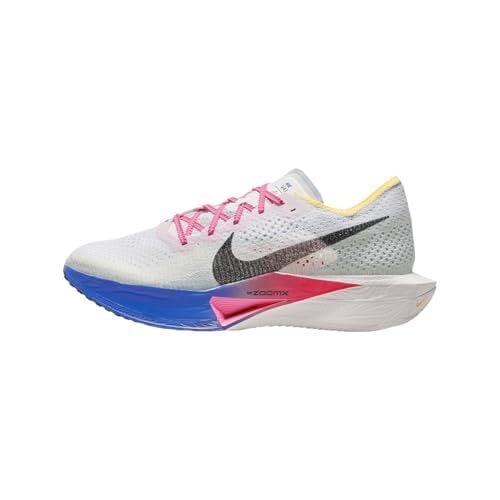
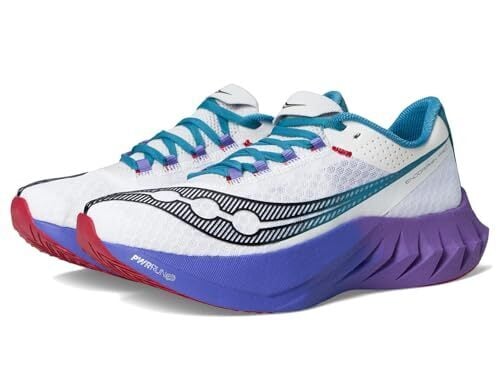
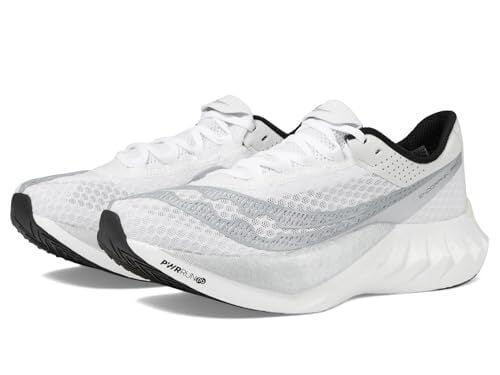
Strava has this data from runners who log the shoes they use for each. (Quick aside: If you aren’t a Strava user, I recommend a spreadsheet like this to keep track of all your juicy data). Not everyone uses Strava’s gear-tracking feature, but for those who do, it’s a great way to keep tabs on mileage per shoe. Most experts suggest swapping shoes every 300 to 500 miles, so it can be a handy reminder of when it’s time for a new pair…unless you’re my colleague Beth Skwarecki, who recently put over 1,000 miles on a pair of cheap running shoes (things turned out just fine).
According to Strava’s tracking data from last year’s race, the three most popular shoes worn by NYC Marathon runners were:
Nike Free Run Flyknit. Sock-like, light and flexible, comfortable for long distances. (Women’s here, men’s here.)
Nike Vaporfly. Carbon-plated and lightweight, a surprising choice for longer distances like the marathon. (Women’s here, men’s here.)
Saucony Endorphin Pro. A well-cushioned racing option with a softer feel than the Nike options. (Women’s here, men’s here.)
If you ask me, the top choice is particularly intriguing. While the running world has been dominated by carbon-plated super shoes promising faster times and better energy return, the most popular shoe at NYC was the Nike Flyknit—a traditional trainer without the high-tech features that define modern racing shoes.
The Vaporfly and Endorphin Pro, on the other hand, uphold the carbon-plated trend that’s been all the rage in the running scene. These shoes promise improved speed and reduced fatigue, though they come with steep price tags ($200 to $270) and shorter lifespans of just 150-250 miles.
While many runners opted for full-on racing shoes or traditional trainers, I’ll be wearing the Saucony Endorphin Speed 5 for the marathon this Sunday. For me, the Speed 5 occupies a sweet spot between everyday trainer and race-day weapon. It features Saucony’s responsive cushioning and a nylon plate (rather than carbon), making it versatile enough for training runs but still peppy enough for race day.
Unlike the racing shoes that dominated the Strava data, I prefer a shoe that offers:
Better durability: lasting 300+ miles compared to 150-250 for most super shoes.
More versatility: comfortable enough for daily training, responsive enough for racing.
Lower price point: typically $160-170 vs. $225-270 for top-tier racers.
Reduced injury risk: the less aggressive plate and moderate cushioning are easier on the legs.
For runners like me, who want performance without the commitment (and cost) of dedicated racing shoes, the Endorphin Speed line has become a go-to option. It’s proof that you don’t need the most expensive super shoe to have a great race.
If none of this data is helpful to you, here’s my guide to finding the perfect pair of running shoes, no matter what kind of runner you are. The beauty of running is that there’s no single right answer. Whether you’re in traditional trainers, cutting-edge carbon racers, or something in between, the best shoe is the one that works for your feet and your goals. See you at the finish line.
TypeScript overtook Python and JavaScript in August 2025 to become the most used language on GitHub. The shift marked the most significant language change in more than a decade. The language grew by over 1 million contributors in 2025, a 66% increase year over year, and finished August with 2,636,006 monthly contributors.
Nearly every major frontend framework now scaffolds projects in TypeScript by default. Next.js 15, Astro 3, SvelteKit 2, Qwik, SolidStart, Angular 18, and Remix all generate TypeScript codebases when developers create new projects. Type systems reduce ambiguity and catch errors from large language models before production. A 2025 academic study found 94% of LLM-generated compilation errors were type-check failures. Tooling like Vite, ts-node, Bun, and I.D.E. autoconfig hide boilerplate setup. Among new repositories created in the past twelve months, TypeScript accounted for 5,394,256 projects. That represented a 78% increase from the prior year.
Read more of this story at Slashdot.
See zwiftinsider.com/tiny for current Tiny Race details.
We learned last month that Call of Duty would be making the leap to the big screen with a planned motion picture project. Today, Deadline reported that two of the main creative forces behind the movie will be Taylor Sheridan and Peter Berg.
Sheridan and Berg previously both worked on the 2016 film Hell or High Water and 2017’s Wind River. Berg was a producer on those projects, but he’s perhaps better known as a writer for the football drama Friday Night Lights. Sheridan’s most recent endeavor was TV series Yellowstone, and he also worked on Lioness, Mayor of Kingstown and Tulsa King. For Paramount’s Call of Duty adaptation, both will produce and co-write, while Berg is currently on board to direct.
Since the writers and director have only just been locked down, there still hasn’t been any public discussion of what era of the lucrative CoD franchise the movie will tackle. Based on the duo’s past work, something contemporary seems most likely, but it may be awhile before we have any confirmation of the story or casting.
This article originally appeared on Engadget at https://www.engadget.com/entertainment/tv-movies/paramounts-call-of-duty-movie-taps-the-writers-of-yellowstone-and-friday-night-lights-175331091.html?src=rss
Learn what drop-in (.d) directories are in Linux and how they help manage configuration files safely.
